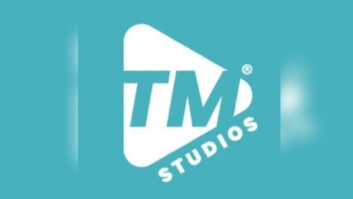VILVOORDE, Belgium — In May, commercial radio stations Qmusic and Joe started broadcasting from their new studios, on the ground floor of the DPG Media (former Medialaan) building.

The new setup comprises 10 broadcast studios and production rooms (with Europe’s first DHD Audio RX2 mixing desks), editorial offices and meeting places.
The “Sound Park” caters for two FM frequencies, nine DAB+ channels, 20 streaming channels plus additional production assignments.

Last year DPG Media gave the green light for new radio studios, serving both Qmusic and Joe. “The studios on the building’s top floor were installed more than a decade ago,” said Bas Boone, project leader Sound Park for DPG Media.
“Moving the radio studios to the ground floor required quite some research and design, the key options being visibility and lots of daylight. During the building, Joe and Qmusic continued broadcasting from their ‘old’ on-air studios.”
BOOSTING VISIBILITY
The goal was to make both brands’ on-air studios visible by placing them in the main entrance hall (Qmusic) and the central corridor (Joe). “A first challenge was the entrance hall without any cabling or production facilities,” continued Boone. “We assigned acoustics company iDeal Acoustics to take on the building and acoustic research and calculations of the project.”
iDeal Acoustics started working in the DPG building last September. “We had to throw away old principles of hidden broadcast studios, replacing them by open on-air rooms, literally without studio doors, yet 100% acoustically perfect,” said Matthias Aerts, CEO of iDeal Acoustics. “The acoustic measures and elements had to fit the visual design made by architects Arf&Yes.”
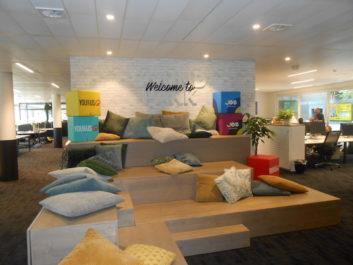
Initially, Aerts wanted to place both main on-air rooms as box-in-a-box, but with each on-air studio weighing some 17 tons, iDeal Acoustics had to review the plans. “The weight of the studios required us to reinforce the building’s floors,” he continued. “To place the double-glazed walls, weighing one ton each, we drove in a construction crane.”
Six radio studios, three production studios, the box-in-box artist lounge and control room, and a green key studio were all individually calculated in terms of acoustics and insulation. Each room was equipped with tailor-made bass traps, absorbers and custom-built wooden diffusors.
“No room is identical,” explained Aerts. “For Joe’s on-air studio, with a partially floating floor, the initial plan was to decorate it with green and plants. As this resulted in poor acoustics, we asked a company in Norway to grow a specific kind of moss, with optimal acoustic transparency, completely in line with Joe’s imaging. With Qmusic, we used customized felt, manufactured in the station’s branding.”

BASIC PRINCIPLE
iDeal Audio manufactured the studio furniture for the production rooms and the control room. It also handled the majority of the infrastructure work, carpentry and integration with a team of nine staffers working in the DPG Media building, in addition to the workers in the company’s factories.
The new radio floor was equipped with over 36 kilometers of data cables (mains, data and fiber were part of the building infrastructure). Amptec installed all of local cabling in the studios and the Netconnect-connection to the DPG Media datacenter. The company also managed the integration of the radio studios and complete system solution for the new radio environment.
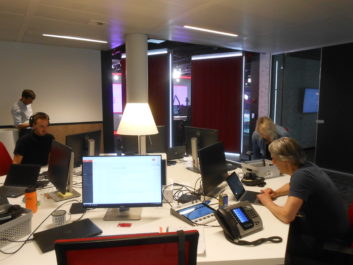
The Sound Park serves both Qmusic and Joe in a similar architecture. With daylight being a crucial element, the complete 1,200-square-meter floor faces the street. The implementation of “flex desks” meant less office furniture was necessary. This resulted in more space for meeting places, an auditorium and conference rooms, offering room for 100 workers.
The broadcast and production studios are stretched alongside the main corridor, from the entrance hall to the back of the building.
“The basic principle was that our studios had to be used for both radio brands, offering identical basic functionalities and a standard presenter setup, the only difference is the size of each room. The on-air and production studios each have a DHD RX2 console, a Dalet Galaxy cart player, four fixed Neumann TLM 102 microphones and three Sennheiser HME 27 headset microphones, with Genelec 8351AP monitors,” said Boone.
TECHNICAL DETAILS
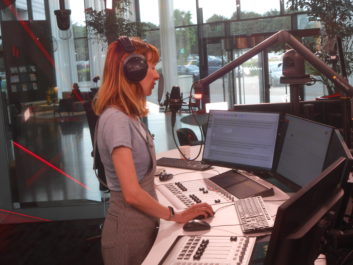
Every studio is equipped with a TC Helicon reverb unit, two Empirical Labs EL8 Distressors for processing and compression (in combination with the DHD RX2’s automix function), a DHD XC2 core, a Telos VX telephone hybrid, four silent PCs and an Adderlink XDIP KVM extender, linking the equipment in the data center with the studio using KVM over IP.
Joe’s and Qmusic’s studios are among the first in the world to use the new RX2 consoles.
“In total, we supplied and installed seven RX2 mixing desks and nine XC2 cores. Six consoles plus cores are used in the radio studios, one RX2 and XC2 is used for staging and testing, one core serves 13 compact DHD 52TX multitouch-based consoles. One dedicated XC2 core is for HTML5-based programs using virtual consoles,” said Bart Lamberigts, Amptec broadcast business unit manager.
In addition, the broadcaster makes use of a Prodys Quantum 3RU frame with eight AoIP codecs for on-site broadcasts, OB vans or live reports, to connect with the DHD system via AES67.
“The whole radio infrastructure is a huge AES67 implementation — like the interconnection between Dalet Galaxy and DHD — we thoroughly tested the Dalet playout server using a Digigram AoIP board, which directly communicates with the DHD using the AES67 protocol,” added Lamberigts. “This assignment confirms our company’s leading role as supplier and system integrator.”
Both Qmusic and Joe’s main on-air studios use LIGA, an in-house developed central integration system. “It was engineered by our Dutch Qmusic colleagues and a big leap ahead towards maximum integration. The system connects with virtually all the digital tools like the Dalet Galaxy playout software, the DHD console, lighting, web APIs, the IT backbone and the videowalls,” added Boone.
All studios are equipped with Panasonic AW HE40 cameras for visual radio — the video signal uses IP connectivity using NewTek NDI technology. The system is steered by Microsoft Kinect sensors in combination with DHD’s level detector feature.
SIGNAL FLOW
The on-air audio signal is channeled over 11 Omnia.9 processors for the two FM frequencies and nine DAB+ feeds. “The Omnia.9 with the MKII upgrade is one of the most powerful multiband processors on the market,” explained Edo Dijkstra of studio integrator TVV Sound. “The MKII upgrade makes it AES67-compliant, alongside Livewire. This is one of the country’s most extensive Omnia.9 installations.”
TVV Sound also supplied five Telos Alliance Z/IP Stream R/2 streaming platforms, each with a capability of eight simultaneous streams, with incorporated Omnia.9 software. “Two Axia Pathfinder Core Pro engines act as virtual core for the studios and control the digital channels via either Livewire or AES67 — quite a unique concept allowing to integrate parameters and commands in case of signal loss, technical problems or off-air warnings,” added Dijkstra.
The Omnia processors, the playout storage devices and Dalet playout machines (one for each radio channel), as well as the encoders and the FM signal distribution (via Broadcast Partners’ transmitter park) and DAB+ (via Norkring) are stored in nine huge racks located in DPG Media’s data center.
“We have taken quite a few risks in the building process but everything turned out well, thanks to the thorough preliminary research, and the great team effort. External companies, some 30 DPG Media technicians and in-house engineers Kurt Vervondel for the audio engineering, Stefan Hessens and Tim Tuboville who supervised the playout and backbone,” underlined Boone.
“These new studios mean more than just shifting places. The technology we installed makes us more than future-proof, and ready for the digital future,” said An Caers, radio director for DPG Media. “In three years from now, 50% of the Flemish audience will listen to digital radio. It’s our ambition to be Flanders’ most inspiring and innovating audio company. The talent of our radio team in combination with groundbreaking technology is helping us to achieve that goal.”
Top Notch Recording Facility
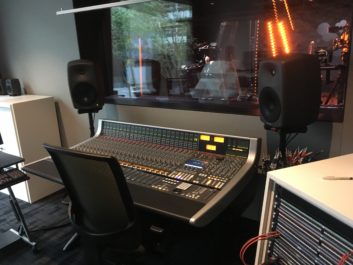
The new broadcast site also features a state-of-the-art concert lounge and control room, combining the advanced technology with new equipment.
“There’s no radio station in the country offering this quality; it was a huge investment but this console will last for a lifetime,” said Iann Castelein, DPG Media radio project manager/sound engineer.
“We opted for this analog mixing console because of its supreme sound quality,” he added. “The audio output is AOIP-linked to our radio studio. We’ve already carried out many recordings and we are seeing artists coming specifically to record on the system here and then release the tracks commercially.”
Mathijs Indesteege, sales director & product support for SSL distributor Joystick Audio, who also handled the studio cabling and supplied the patch bays believes the SSL AWS948 console with Delta Control, featuring hands-on workflow and advanced DAW integration with automation, is ideal for DPG’s strict requirements.











